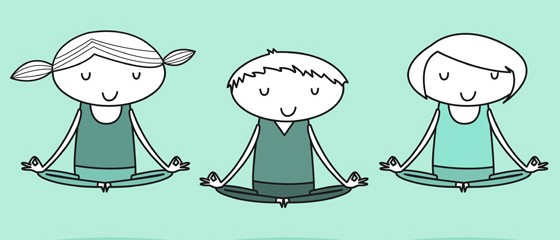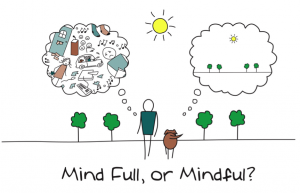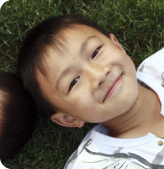
Practicing mindfulness within the hectic day.
Posted February 28, 2016 | From Us, kidsWritten by Li Yang, ND
Now that everyone is back from mid-winter break, most children and teens are getting back into the routine of balancing school, therapies, extracurricular activities and family time. Beyond juggling these activities, this is a great time for adolescents to recognize their stressors and start to develop coping strategies. It is important that parents and role models begin to show their teens how to practice mindfulness, recognize symptoms of stress, and manage any emotional outbursts.
Some physical signs of stress includes:
- fast heart beat, racing heart
- cold/clammy hands
- butterflies or knot in stomach
- tight muscles, especially the jaw, shoulders, back
- trouble falling asleep (especially if the mind has difficulty shutting off)
- emotional outbursts- crying, irritability, wanting to escape
- headaches
- increase in stomachaches or feelings of panic
I find that scheduling down time after school and extracurricular activities is extremely helpful in recouping from the hectic day. Setting aside 30-40 minutes for your child to relax, listen to music or audiobooks helps them turn off their “constant on the go” mentality. This would also be a great time to practice mindfulness and relaxation exercises with your child.

Relaxation tips and techniques:
It is important to help your child recognize when to use these relaxation techniques. Being able to check in with their bodies, scanning for any of the above listed physical signs of stress throughout the day helps them identify when to use the below strategies.
Abdominal breathing-
Take a slow deep breath and try and fill your abdominal like a ballon. Place both hands on your abdomen and you want to feel it expand outward while breathing in. Count from 1 to 5 as you breath in and as your breath out.
Mini scan-
Take a deep breath in. Scan your body for areas that feel tense starting from the head to toe. The goal is to breathe into these areas as you exhale. Take 2 slow deep breaths visualizing the tense area (top of the head, upper shoulders, etc) and imaging blowing away the tension like a pile of sand in your hand. Do this twice for every tense part of your body.
You are going to use your right thumb to close your right nostril and either your right ring or little finger to close your left nostril.
Sit straight in a comfortable position in a chair or couch. Take a few inhales and exhales, counting in and out for 2 seconds. Start by closing your left nostril with your ring or little finger. Inhale through your right nostril and exhale through your right nostril. Repeat 5x.
Then release your left nostril and close your right nostril with your right thumb. Inhale and exhale gently, 5x. Don’t force your breath and if you need to take a break breathe through both nostrils, then do so. This exercise should feel refreshing and balancing.
Remember that practicing mindfulness throughout the day is not about perfection. It is about recognizing how our body reacts when we are stressed or anxious. Learning how to be mindful is a life skill and the more we practice the better we will get!
Great resources for parents and teens:
http://mindfulnessforteens.com/guided-meditations/
http://youth.anxietybc.com/mindfulness-exercises
Phone apps:
Smiling mind- can choose programs for different age groups, a great one for children and adults alike. https://itunes.apple.com/au/app/smiling-mind/id560442518?mt=8&ign-mpt=uo%3D4








